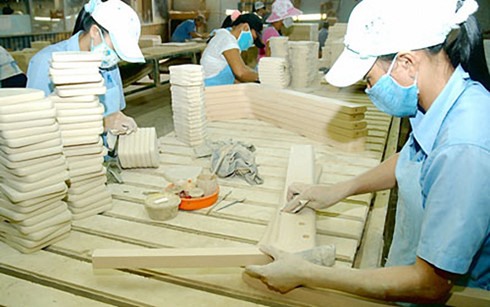 Economy
Economy

Together with the investments from Japanese medium and small enterprises, many Japanese companies operational in the country have unveiled plans for capital expansion as a commitment for their long-term business activities in Việt Nam.
 |
| Medium-sized and small Japanese enterprises are set to invest in Việt Nam in addition to capital expansion by many Japanese companies already operating in the country. — Photo saigondautu.com.vn |
Compiled by Lê Hùng Vọng
Medium-sized and small Japanese enterprises are set to invest in Việt Nam in addition to capital expansion by many Japanese companies already operating in the country.
According to the Ministry of Planning and Investment, with investments of US$1.92 billion as of October, accounting for 10.9 per cent of total FDI, Japan is the second biggest foreign investor in Việt Nam this year.
In mid-November, Toto Vietnam, a subsidiary of Toto Group (Japan), opened a representative office in HCM City. It is the second office for the company in the country where, after nearly 15 years of operation, TOTO employs over 3,000 employees at its distribution agencies.
Masao Yamasaki, general director of Toto Việt Nam, said the Vietnamese operation has scored the highest growth rate in the group, with 2015 sales rising by 160 per cent and this year’s by 130 per cent.
“We would like to have a long-term connection with this country,” Yamasaki said.
Abayashi Isao, general secretary of the Japanese Business Association in HCM City, said Việt Nam was attractive to Japanese businesses since Vietnamese customers liked their brands.
According to statistics released by the Japan External Trade Organisation (JETRO), nearly 70 per cent of Japanese companies would like to increase their investment and expand production in Việt Nam.
The sectors into which Japanese investments have flowed in are diverse, straddling construction, transportation, infrastructure, electronic equipment, property, trading, services.
More and more Japanese firms have been entering the hi-tech agricultural sector.
Hirokata Yasuzumi, chief representative of JETRO in HCM City, said due to the devaluation of the yen (against the US dollar) and the recession in Japan, investment from his country into Việt Nam has been declining.
But a closer reading shows that the number of Japanese companies investing in Việt Nam this year is not down.
“Though total investments have been declining, the number of foreign direct investment projects from Japan to Việt Nam has been on the rise,” Yasuzami said.
“This indicates it is now the time for investments by Japanese small and medium enterprises (SMEs).”
In a recent report on Japanese investment, the Ministry of Planning and Investment says Japan has 4.7 million SMEs that are looking for opportunities to invest in other countries, including Việt Nam.
He said the Japanese Government co-operated with trade promotion agencies and the Vietnamese Business Association to introduce a web-matching system called J-GoodTech to foster market development.
VN dragon fruit struggles to find markets
Since exports of dragon fruit, mainly through the border with China, are volatile, farmers want the fruit to be promoted in the local market, a conference held by the Ministry of Trade and Industry and Bình Thuận Province last week heard.
According to figures from the Ministry of Agriculture and Rural Development (MARD), dragon fruit is grown on 37,000ha and the annual output is some 630,000 tonnes.
This includes 26,500ha in Bình Thuận, which produces over 500,000 tonnes of the fruit.
It is also grown in the provinces of Long An, Tiền Giang and Vĩnh Long, with the area under the fruit being constantly expanded.
MARD estimates that 15-20 per cent of the fruit is consumed in the domestic market and 2-3 per cent is exported elsewhere with the remaining 80-85 per cent traded over the border with Chinese companies.
Đỗ Minh Kính, deputy director of the Bình Thuận Department of Trade and Industry, said there was an overwhelming dependence on the Chinese market, which makes exports of the fruit unstable and risky.
The output in these southern provinces is huge, and with much of their exports heading for China, their trucks are often forced to queue at the border which causes the fruits to spoil and farmers and exporters to suffer losses.
According to Ngô Văn Tuấn, director of the Tiền Giang Province Department of Trade and Industry, the local market is ignored.
Many farmers grow the fruit to VietGAP and GlobalGAP standards for exporting to markets that demand such quality, but these fruits do not fetch higher prices than normal ones, meaning farmers prefer to invest in the latter.
To promote production and add value, provinces growing this fruit needed to launch trade promotion activities and persuade local and foreign companies to join the processing and consumption chains, Deputy Minister of Trade and Industry Hồ Thị Kim Thoa said.
Processors were encouraged to diversify and make other products, she said.
Delegates from the provinces of Bình Thuận, Long An and Tiền Giang urged the Ministry of Agriculture and Rural Development to make zoning plans for dragon fruit cultivation around the country, and to draft criteria for using agro-chemicals to improve the quality of the fruit. -- VNS